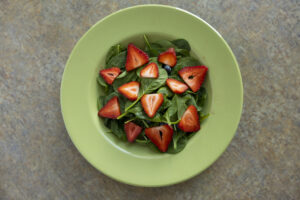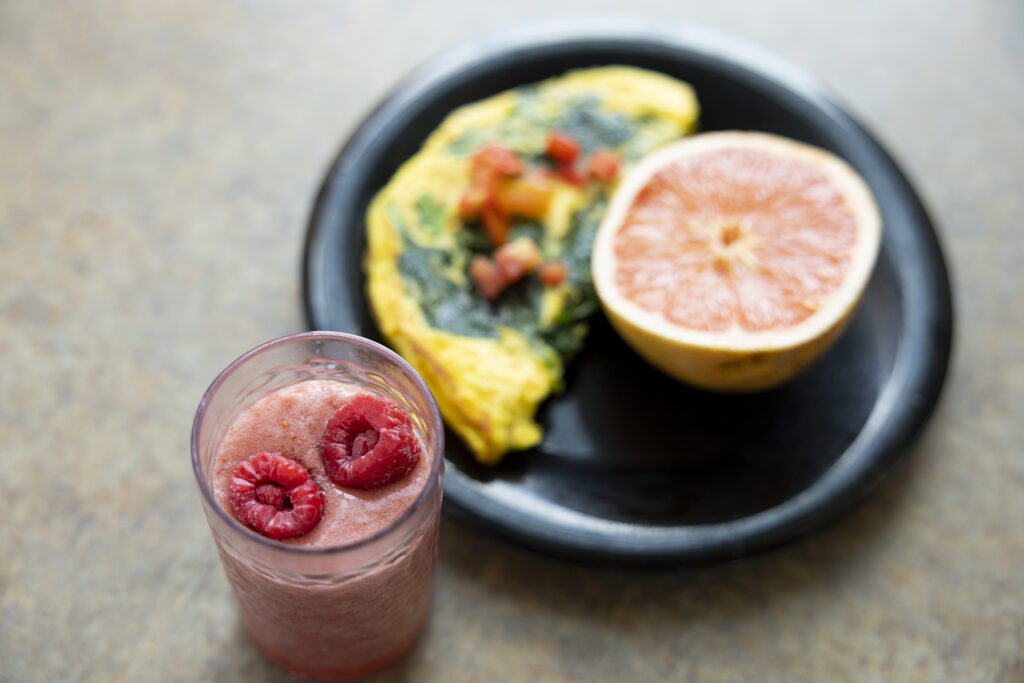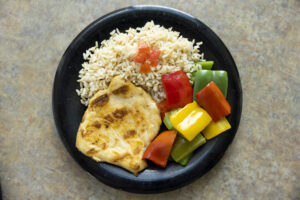For anyone posting food photos on Instagram, University of Georgia researchers have advice to garner more engagement.

A hot dog on a plate can earn likes more easily than something healthy, according to recent UGA research. (Photo by Andrew Davis Tucker/UGA)
A recent study from the College of Family and Consumer Sciences found that all food photos are not created equal. While sugary treats or fully loaded burgers have a quick appeal, healthier food options may need a little extra help in front of the camera.
For unhealthy foods, not as much effort is needed in photos. The foods earn likes and comments on their own, said Yilang Peng, an assistant professor in the College of Family and Consumer Sciences.
"But if you have health practitioners trying to promote a healthy diet, it's very crucial for you to pay attention to the use of visually aesthetic images," Peng said.
While one goal of this study was to better understand consumer habits and engagement with social media, the findings also have practical implications.
"We believe this topic can be helpful for health communication and health practitioners," Peng said. "If you have someone trying to promote a healthy diet, it's crucial for them to pay attention to the visual aesthetics. This study shows that styles play an important role and shape our engagement with different social media accounts."

Higher calorie foods can gain more likes than healthy foods on social media, according to recent UGA research. (Photo by Andrew Davis Tucker/UGA)
To better understand how people interact with food photos, Peng and co-author Muna Sharma analyzed more than 50,000 images from food-centric Instagram accounts, including chefs, influencers and nutritionists. Aided by a computational visual analysis, researchers checked images for color composition, repeating patterns, image complexity and approximate calorie density, and they compared how these elements related to likes and comments.
While high-calorie foods-cookies, pastries, doughnuts-saw higher engagement across the board, lower-calorie options such as vegetables or well-balanced meals needed more photographic staging to get a boost.

Research from the University of Georgia found that utilizing warm colors and repeating patterns, such as strategically placing strawberries on a salad, can increase an image's appeal and engagement on social media. (Photo Andrew Davis Tucker/ UGA).
"There are some neurological studies that show as people visually process high-calorie meals, they process them faster than low-calories images," said Sharma, who earned a doctorate from UGA in 2022. "So, when they are looking at a low-calorie image, they give more attention to all of these visual features. That means that if you want to draw people's attention to these lower-calorie foods, you have to take care to highlight specific factors."
These factors include warm colors rather than cool tones such as green or blue, incorporating repetition and placing food on a clean background.

UGA researchers found that a few tweaks helped healthy images get more likes and comments on social media. This included utilizing warm tones, placing food on a clean background and repeating patterns. (Photo by Andrew Davis Tucker/UGA)
"A good example of this is a salad," Sharma said. "Instead of just the salad, you could arrange slices of strawberry on top, in a repeating pattern. That will make it more attractive and can increase audience engagement on the image."
The impact can also multiply, Sharma said, as food images circulate through social networks. This research relates to her personal experience, she said, and noted the trend of dalgona coffee-a whipped beverage made with instant coffee and cream-which gained popularity in early 2020.

Using warm tones, such as red and yellow bell peppers, is one tip that can increase engagement with images of healthy foods on social media, according to recent research from UGA. (Photo by Andrew Davis Tucker/UGA)
"It was trending on Instagram, and every time I saw it, I really wanted to try it," she said. "When I finally made it, I posted my own photo to Instagram. And we see this in other studies, when people in your network post certain images or like and comment on those images, you are tempted to post similar things because you know it will be popular in your network."
They hope that by helping others create healthy content that garners higher social media engagement, healthier meals can also trend.
"On one hand, people might not automatically engage with healthier foods, but people do like to show off healthy meals," Peng said. "It comes back to their identity, and those posts can make them look better on social media. My recommendation is that even with a very simple integration of these tips, you can boost engagement."






